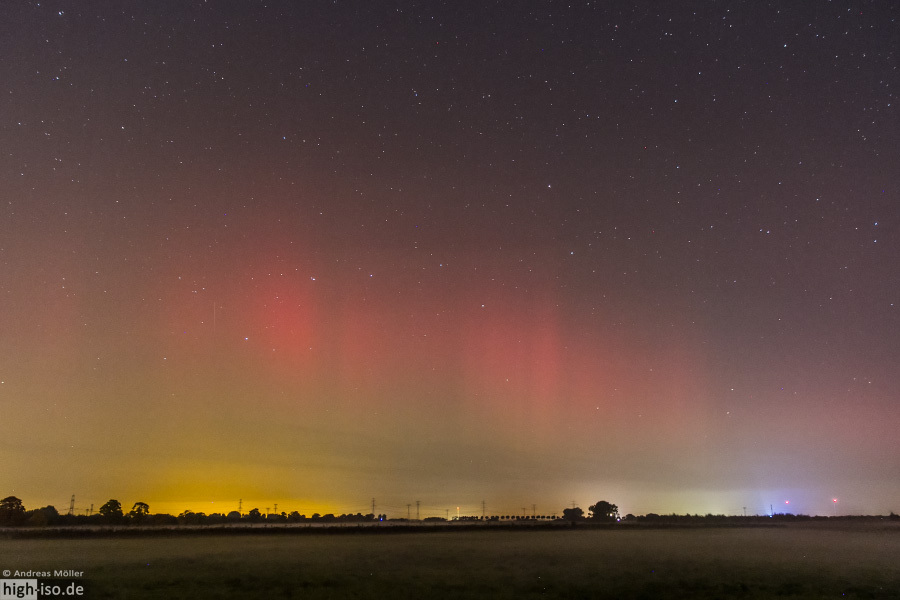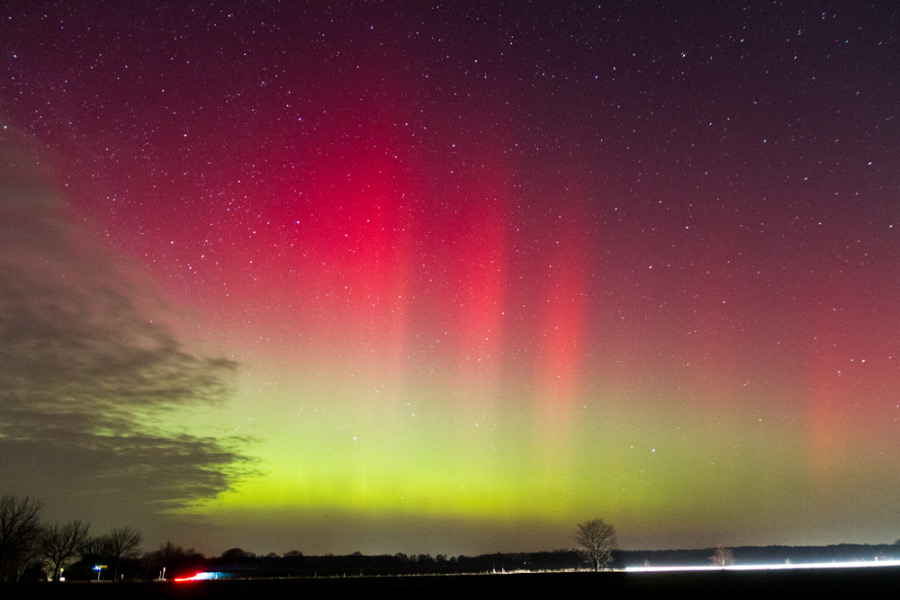Overview
Many believe that the aurora can only occur in high latitudes. However, there are several aurora sightings from Germany each year. During particularly strong magnetic storms, the auroral oval shifts southward. Additionally, molecules from higher layers of the atmosphere are excited, increasing the chance of seeing the aurora in mid-latitudes. On average, there are around 10 - 20 aurora sightings in Germany per year. Everything about aurora forecasts can be found on our topic page.
The forecast of auroras is a difficult and complex matter. We have tried to compile the background and facts on a topic page in a comprehensible way.
General Information on the Aurora
The aurora, a cosmic phenomenon resulting from the sun-earth interaction, has been well-known since antiquity. Auroras are caused by corpuscular rays emitted by the sun, deflected towards the poles by the earth's magnetic field, and exciting air molecules to glow. They are usually observed at altitudes between 65 and 400 km, occasionally up to 1200 km during geomagnetic storms.
Particularly in our middle latitudes, auroras are mostly observed by chance. Therefore, the distribution frequency is only approximately known. As geographic latitude decreases, the likelihood of seeing an aurora also decreases. Additionally, solar activity plays a decisive role. During periods of maximum solar activity (e.g., 1957), many auroras were observed. However, eruptions can also occur on the sun near the minima. Consequently, geomagnetic disturbances of a larger scale occur, and auroras can also be visible in middle latitudes. The rule of thumb is that during the maximum phase of solar activity, about 4-8 auroras can be seen annually in Germany. However, observations can also occasionally be made around the minimum.
Observing an aurora is relatively simple, as it differs from other celestial phenomena (noctilucent clouds, intensified night skyglow, Milky Way, etc.) through active behavior: Always changing forms appear, sometimes a whitish arc lying above the horizon, sometimes shooting rays, sometimes isolated areas or spots that can appear in different colors. In our latitudes, they are mostly reddish, but strong geomagnetic disturbances can also cause other colors like an intense violet to appear.
An aurora is usually expected after a prominent solar eruption, 24-36 hours after the solar event. This is the time particles need to reach the earth, trigger geomagnetic disturbances, and stimulate luminescence processes in the upper atmosphere. As a result of geomagnetic disturbances, the auroral zone shifts equatorward, and the phenomena can be sighted in middle latitudes. On our aurora forecast page, you can find information about current activity and predictions.
When an aurora occurs, one should pay attention to morphological changes (areas, spots, colors and their respective changes). Additional desired data includes date, observation location (coordinates), time (UTC), beginning and end of observation, sky condition, and description of the aurora (arc, areas, rays, color, changes). We have created a form for this purpose. A photographic documentation, which can be easily done with practically all commercially available cameras (provided they allow long, manually controlled exposures) and sensitive films at different exposure times (preferably making a series), is important.

